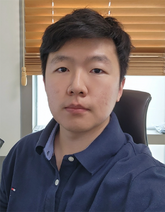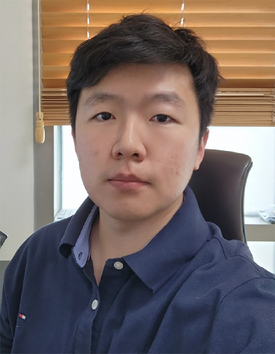Tae Su Choi
Graphical Abstract
 |
Position, Location: | Assistant Professor, Division of Life Sciences, Korea University, Seoul (South Korea) |
| Homepage: | https://sites.google.com/view/tsclab | |
| ORCID: | orcid.org/0000-0002-1515-3275 | |
| Education: |
2008–2012, Undergraduate, POSTECH, Pohang (South Korea) 2012–2017, PhD, Supervisor: Hugh I. Kim, POSTECH, Pohang (South Korea) 2017–2019, Postdoc, Supervisor: Hugh I. Kim, Korea University, Seoul (South Korea) 2019–2023, Postdoc, Supervisor: F. Akif Tezcan, UCSD San Diego (USA) |
|
| Research: | Peptide/protein design, amyloids/metalloproteins, biological mass spectrometry, structural biochemistry | |
| Hobbies: | Watching baseball games |
I am most proud of my group when students and postdocs finish everything independently.
My favorite thing about my lab group is the students/postdocs.
If I were not a scientist, I would be a physician.
My favorite saying is: “Just do it.”
My favorite/least favorite job in the lab is writing a paper (favorite)/writing a grant (least favorite).
My favorite example of chemistry in everyday life is the Maillard reaction.
My favorite time of day is between 9 pm and 1 am (I am a night person).
I recharge my batteries by drinking rich-tasting nonalcoholic beer with ice-cream at night.
I advise my students to make steady progress, slowly but surely.
The most important future applications of my research are developing therapeutics.
My favorite singer-songwriter is Weeknd (Abel Makkonen Tesfay) because I like weekends.
I can never resist ribeye steak.
If I could be any age, I would like to be 17 because I might study harder than I actually did.<?>ok?<?>
The greatest scientific advance of the last decade was Artificial Intelligence.
My motto is: “See the unseen.”
Behind the Science
When Dr. Lim (the first author on this paper) and I were working on designing inhibitors for amyloid aggregation, we realized that further improvement wouldn't be feasible using one-dimensional, flexible peptide scaffolds. So, we decided to test disulfide bonds, as we were also working on another project involving disulfide-linked flexible metalloproteins. Fortunately, computer simulations showed that the flexible peptides were stabilized in an anti-parallel β-sheet conformation. This observation inspired us to examine the inhibitory effect of Pa*-a* on amyloid-β aggregation. It was a great feeling to see that our intuition had led to an interesting design concept for peptide inhibitors.
The author presented on this page has published his first article as a submitting corresponding author in Angewandte Chemie:
“Anti-parallel β-Sheet as a Key Motif of Amyloid-β Inhibitor Designed via Topological Peptide Reprogramming”: D. Im, Y. E. Lee, G. Yoon, W. A. Goddard III, T. S. Choi, H. I. Kim, Angew. Chem. Int. Ed. 2025, 64, e202504640.
International edition: DOI: 10.1002/anie.202511901
German edition: DOI: 10.1002/ange.202511901





